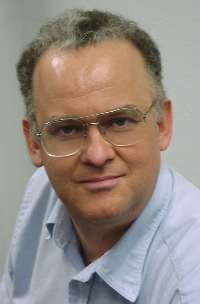 The broad goals
of nanotechnology—the
ability to inexpensively arrange atoms in most of the ways permitted by
physical law—are now widely accepted, but we need more. It is not enough to
agree that heavier than air flight is possible, nor is it sufficient to
believe that some design based on rockets can reach the moon, nor does the
abstract realization that mass can be converted to energy change the course of
history. We need to move to the next step: the Wright Brothers, the Apollo
Program, the Manhattan Project—we need to translate abstract agreement into a
focused and funded project.
The broad goals
of nanotechnology—the
ability to inexpensively arrange atoms in most of the ways permitted by
physical law—are now widely accepted, but we need more. It is not enough to
agree that heavier than air flight is possible, nor is it sufficient to
believe that some design based on rockets can reach the moon, nor does the
abstract realization that mass can be converted to energy change the course of
history. We need to move to the next step: the Wright Brothers, the Apollo
Program, the Manhattan Project—we need to translate abstract agreement into a
focused and funded project.
This raises the
obvious question: focused on what?
Nanosystems gave us a persuasive feasibility argument for
assemblers,
but didn't give us a design for a specific assembler. For every fundamental
design problem, Nanosystems gave us several feasible solutions—but
never picked one specific solution. Indeed, one of the main thrusts was that
we could have confidence that assemblers were feasible precisely because there
were many solutions to every problem—it's difficult to be absolutely certain
that a specific solution will work, but when there are many possible solutions
available it's almost certain one of them will work.
We have seen
continued work on specific aspects of assembler design but we haven't seen a
complete design. Such a design (and accompanying analysis) is feasible today,
but a complete design will require the work of a team of people for some
years. We need to explore the space of possible designs, analyze at least some
designs in full detail, and then use those designs as a point of focus for
further development. We can start today, but have not.
The major
consequence of this failure is continued delay, much of which will be caused
by continued confusion about "what is an assembler." While we know that all
the fundamental problems can be solved, we don't have a single design or
embodiment that selects a specific solution for each problem and integrates
those specific solutions into a single unified system. Perhaps more seriously,
there is the fog and uncertainty created by mental confusion and
misunderstanding. People have a hard time grasping complex arguments and
abstract conclusions, and when we are hearing new ideas for the first time
it's very easy to get confused. Flight to the moon was thought impossible
because "there is no air to push against" in the vacuum of space. Airplane
wings push against air, propellers push against air, helicopter blades push
against air—surely the proposed space rockets were meant to push against air?
But there is no air in space! So can our experience with familiar things
mislead us when we consider fundamentally new ideas.
A project with
many people must have a clear, detailed, and comprehensive description of both
the goal and how to achieve it. We need at least one design for an assembler
with all the kinks worked out, all the irritating little design issues
settled, all the potential sticking points resolved. Without this, any effort
to build an assembler will deteriorate into chaos and confusion as the people
involved find themselves working at cross purposes—possibly without even
realizing it. If we want to build a heavier-than-air flying machine, and one
person designs the blades for a helicopter and another works out the wings of
an airplane while a third says we should propel the device by throwing sticks
of dynamite out the rear and exploding them, the result will be chaos.
Right now, the
detail that we can achieve in a system design is limited by the fact that
serious design efforts have so far been limited to one or perhaps two people.
We could greatly increase the detail of the design by increasing the number of
people (provided they are the right people). Half a dozen to a dozen people,
properly coordinated, would be a great improvement over the present situation,
and would start to provide us with system designs that had a level of detail
that would give us greater collective clarity in understanding the goal and a
greater ability to determine the developmental pathways for reaching it.
Besides pursuing
designs in greater depth and detail, we should also examine designs that
differ radically in their approach and assumptions—we can explore the design
space seeking designs that are (for example) easier to build. Consider the
Analytical Engine, designed by Babbage in the 1830's. The single most
important intellectual development of the 20th century, Babbage's design was
never built nor was there any systematic exploration of possible alternatives.
Looking back
with the advantage of 20-20 hindsight, we can see what Babbage and the rest of
the world missed: relays. Relays were known in the 1830's, and were widely
deployed in the 1840's for use in telegraphy. Had Babbage and others explored
the design space for "Analytical Engines," they might have realized that a
relay-based computer was relatively easy to build and quite practical. But
they didn't, and so missed an opportunity of historic magnitude.
Let's not miss
another opportunity.
